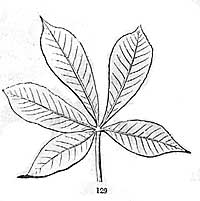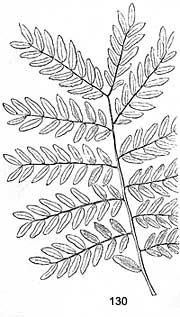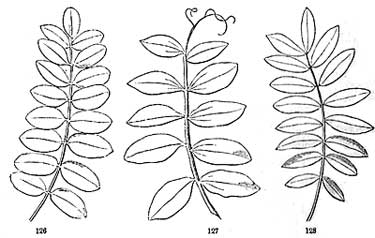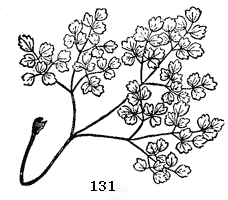
Figures and captions: Asa Gray. 1880. Gray's Lessons in Botany and Vegetable Physiology Vision, Blakeman, Taylor & Co., New York and Chicago, 1880.
 FIG 130. A twice-pinnate (abruptly) leaf of the Honey-Locust.
FIG 130. A twice-pinnate (abruptly) leaf of the Honey-Locust.
compound leaf
A compound leaf is one whose blade consists of two or more entirely separate parts (leaflets).
There are two principal types of compound leaves:
pinnate in which the leaflets are arranged along either side of the main stalk (Fig. 126) and palmate in which the leaflets are all borne at the tip of the leaf stalk (Fig. 129).

FIG. 126. Pinnate with an odd leaflet, or odd-pinnate. 127. Pinnate with a tendril. 128. Abuptly pinnate leaf.
Compound leaves may be again compounded to form twice pinnate (Fig. 130) or twice palmate leaves, or even further compounded to form thrice compound leaves. When it goes beyond thrice compound or if the degree of compounding is variable, leaves are referred to as decompound, e.g., as in the 4-times compounded leaf of common meadow-rue (Fig 131).

FIG. 131. Decompound leaf of Meadow Rue.